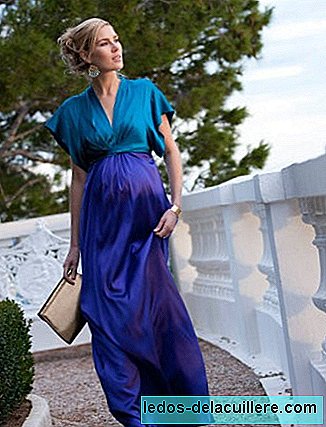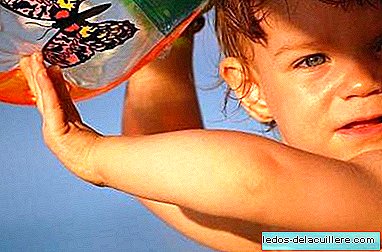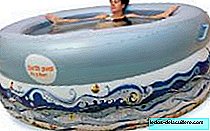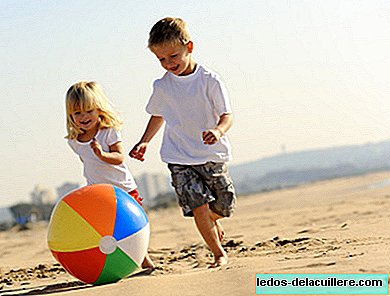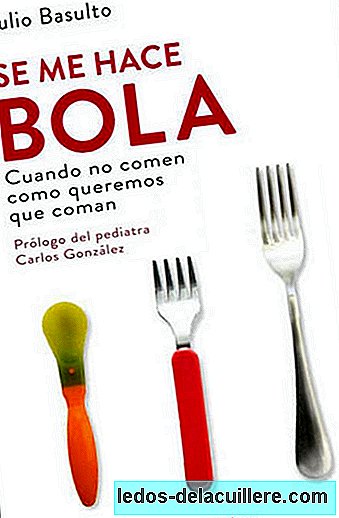
Julio Basulto affirms that 'I am made a ball' pretends to be a nephew of 'My child does not eat me', written by Carlos González. However you can be clear that This book will take its rightful place, yes ... it comes extended by the famous pediatrician, and with an epilogue written by the also professional of pediatrics Luis Ruiz.
'It makes me ball' hooks from the first moment: with the subtitle 'When they do not eat as we want them to eat', it hides the simplicity of those who advise raising children with respect to their physical and emotional needs, that easy. With this many children would continue to smile at lunch, snack or dinner, and many other parents could save more than one disgust. The title promises, but even more so is the training and experience of the author who is a graduate in human and dietary nutrition. Julio is editor in the Spanish Journal of Human Nutrition, co-author of two other books, and father of three daughters. To write this simple and effective guide, he has used a holistic vision of food, the basic idea that we will find is' it is not about instilling, coercing or imposing, but incorporating a healthy diet pattern at home so that our children learn with the example'
Why do we need this book of food and child nutrition in our homes? The main reasons are that exposes very clearly the relationship between infant feeding and health, and covering all stages of childhood (including infants and adolescents). If you allow me I will pause for a moment in the statement that 'poor diet and disease have a lot to do', endorsed by the WHO, an organization that points out the unhealthy diet as a key risk factor for communicable diseases, yes : can be modified as we all know.
'It makes me ball' offers a different approach to infant feeding so that mealtime is a happy time for children and adults
When answers are sought in this book there is greater autonomy and security as parents to focus the feeding of the children, if in the end, feeding children is much simpler and more natural than we intend. We do not need magic formulas, nor rules, nor advice from 'experts', just to be clear about the precepts of healthy food, and respect for the needs of our children.
We start with an extensive chapter dedicated to babies up to six months, in which breastfeeding takes an important role. Breastfeeding is recommended, and it is recalled that 'the mother who does not breastfeed is as good a mother as the others, the one who gives it, too.' It includes a reflection on 'why don't we breastfeed?'
As we enter the food until we are two years old, we will come across the food to be prioritized or limited and the suggestion of introducing the same as for adults, leaving them to take the food (I think most babies prefer it to the porridge), with the exceptions to limit or eliminate. And to complete this interesting chapter we find the substances of risk in certain foods.
'Do not deny, do not offer' is the indispensable command to know what to do with superfluous foods. In addition, this book brings us back to the reality of malnutrition by default and excess, as well as advertising and availability of empty-calorie foods. 'Setting an example' is something we should remember to do with our children in this whole matter
And finally we reach children over two years, and adolescence, easier or harder than when they are babies? Simply they should be fed like a healthy adult (and that excludes an excess of protein, sugary drinks, etc.). But we may need suggestions, Julio Basulto has also thought about it.
To make you 'mouth water' I tell you that you will still find in the book a table on how to malnourish a child for good, for bad, or for regular ones (with mention of threats, emotional blackmail, humiliation, or lies, among others).
Although (and we know that well) being respectful is not spoiling, although some people want to make us believe.
I have read the book, so greedily, that I must now review it, and in addition to the topics that I have highlighted, I would like to tell you that It is written with a lot of common sense, good taste, and in a pleasant tone that makes it a very easy book to digest (not 'you will be ball', much less). It also includes many bibliographical references and studies that support the text. You will find it in the DeBolsillo publishing house, and it can be purchased from here.
We will soon bring Julio through an interview, so he can tell us more things, it will be a pleasure to receive him.


